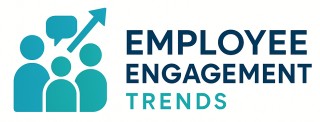
Understanding Employee Engagement
Grasping the Concept of Employee Engagement
At its core, employee engagement refers to the emotional commitment an employee has towards their organization and its goals. It goes beyond mere job satisfaction; it's about feeling invested in the work and actively participating in the success of the business. In any organization, ensuring that employees are engaged is crucial. Engaged employees are likely to stay longer, perform better, and contribute to a more vibrant work culture.
Human Resource (HR) professionals play a pivotal role in fostering this engagement. They design and implement strategies that offer professional development opportunities and promote effective team building. Through a well-defined resource management framework, HR ensures that the organization values its employees. The success of these efforts can often be traced back to effective human resource management, which necessitates a thorough understanding of what drives employee experience and performance.
Developing a deep understanding of factors that contribute to employee engagement is essential. In particular, addressing barriers to engagement such as ineffective leadership is vital. Identifying key traits of ineffective leadership can help HR create a more inclusive and motivating workplace. The insights gained from this process can also enhance the organization's strategies, ensuring they remain ahead in the ever-evolving work environment.
As this effort unfolds, HR professionals often face challenges, which demand innovative strategies. These professionals work tirelessly, even on international and professional days, to ensure employees feel valued and included. Ultimately, understanding and actively promoting employee engagement is a continuous process that requires commitment and dedicated resources.
The Role of HR in Employee Engagement
The Critical Role of Human Resources in Boosting Morale
Human Resource (HR) professionals are vital in shaping the employee experience within an organization. Their responsibilities in resource management are diverse, often serving as the bridge between management and the workforce. They must instill policies that integrate equity inclusion and diversity, fostering a work environment where every team member feels valued. HR professionals meticulously manage the recruitment and development of talent, ensuring a robust team capable of meeting business objectives. By facilitating professional development initiatives, HR can encourage continuous learning and skill enhancement among employees. This commitment not only celebrates human potential but also increases engagement by making employees feel invested in. One of the most crucial aspects of HR's role is performance management. HR teams work to implement systems that recognize and reward hard work and achievements, thereby motivating employees to give their best each day. Resource professionals are also involved in organizing professional day celebrations that acknowledge the contributions of employees, further improving morale. Team building activities orchestrated by HR can enhance collaboration among employees, making the workplace not only a place of business but also one of camaraderie. These activities often align with international day celebrations, promoting a culture where each individual, regardless of their background, can thrive. Furthermore, HR must navigate the complexities of balancing organizational goals with employee needs. They must be adept at utilizing resources to create a work environment conducive to both personal and professional growth. Every action taken by HR professionals is geared towards creating a culture of transparency and trust. In the modern landscape, building trust and transparency is essential and intertwines closely with employee engagement. By doing so, organizations can establish a workplace where employee roles feel meaningful and rewarding, resulting in sustained engagement.Challenges in Maintaining Engagement
Understanding the Complexities
Keeping teams engaged over time is a dynamic and ongoing challenge faced by many organizations. Human resource professionals need to constantly adapt to the evolving workplace landscape. But what exactly makes maintaining employee engagement such a complex task?
Managing Diverse Expectations
A significant challenge lies in catering to the diverse expectations of a growing and varied workforce. Employees today come from different backgrounds, cultures, and age groups, each with unique expectations from their workplace experience. AI tools can offer solutions for diversity equity and inclusive workplaces. However, it remains a delicate balance to ensure everyone's needs are met.
Addressing Employee Satisfaction Levels
Organizations are grappling with how to effectively measure and improve job satisfaction levels. Understanding the professional needs and career development aspirations of employees can be an arduous task. Professionals in HR must sincerely invest time in learning about their teams and valuing them as individuals with unique skills and aspirations.
Resource Allocation and Management
Resource management is another hurdle that HR professionals face while striving for enhanced employee engagement. With finite resources, it's crucial to judiciously allocate them in ways that foster equity, inclusion, and professional development opportunities for all employees. Celebrating the contribution of resource professionals can help elevate team morale.
Promoting Professional Growth and Team Building
Ensuring ongoing development and team building is crucial in fostering a productive work environment. Providing opportunities for continuous learning and encouraging collaboration within teams can significantly improve an organization’s overall productivity and employee satisfaction. Every professional should feel that their hard work is recognized, and their growth prospects are supported by the organization's resources.
Understanding these challenges is essential for HR professionals as they seek ways to combat them effectively, paving the way for a thriving human-centric workplace.
Innovative Strategies for Engagement
Unleashing Potential with Creative Approaches
Employee engagement is a pivotal aspect that contributes to the well-being and productivity of any organization. Human resource professionals must explore innovative strategies to foster a positive employee experience that can grow in tandem with the business. With the evolving landscape of the workplace, it's essential to adopt both tried and tested methods and novel approaches to face the employee engagement challenges. Organizations that emphasize diversity, equity, and inclusion often create vibrant environments where all employees can thrive. Integrating these principles into daily work culture is not just about compliance; it's a strategic advantage that enhances employee engagement. Team building is another key to boosting engagement. Structured activities that encourage collaboration can forge stronger relationships and enhance communication, ultimately leading to a sense of camaraderie and trust within a team. This shared sense of purpose nurtures a more engaged workforce. Moreover, professional development opportunities demonstrate an organization's commitment to employees' growth. Encouraging continuous learning and skill development can keep teams motivated and align their growth with the company's goals. This can be particularly impactful when linked with performance management systems that celebrate achievements and map career progression. Celebrating the contributions of human resource professionals on a professional day highlights the crucial role they play in fostering a supportive environment. Acknowledging their hard work can also motivate HR teams to continue devising new ways to engage employees. Embedding digital resources and tools in everyday work life can streamline processes and foster a more dynamic work culture. Human resources management technology, for instance, helps track engagement metrics, allowing organizations to adapt their strategies in real-time to meet the evolving needs of their workforce. Implementing these innovative strategies with insight and care can create a workplace where employees feel valued and engaged, leading to increased retention and overall success for the organization.Measuring Engagement Success
Evaluating Engagement Levels
Measuring employee engagement is crucial for understanding how effectively your organization is fostering a positive work environment. It involves assessing various aspects of the employee experience, from job satisfaction to the sense of belonging within the team. Human resource professionals play a pivotal role in this process, using their skills to gather and analyze data that reflects the true sentiments of employees.
Tools and Techniques
To accurately gauge engagement, organizations often rely on a mix of quantitative and qualitative methods. Surveys are a popular tool, providing a structured way to collect feedback on different aspects of the workplace. These surveys can cover topics like professional development opportunities, resource management, and the effectiveness of team building activities. Additionally, focus groups and one-on-one interviews can offer deeper insights into the human side of engagement, revealing how employees truly feel about their roles and the organization.
Key Metrics to Track
- Employee Satisfaction: This metric reflects how content employees are with their job roles and the work environment.
- Turnover Rates: High turnover can indicate underlying issues with engagement and should be closely monitored.
- Absenteeism: Frequent absences might suggest disengagement or dissatisfaction among employees.
- Performance Metrics: Evaluating productivity and performance can help identify areas where engagement efforts are succeeding or need improvement.
Feedback and Continuous Improvement
Once data is collected, it's essential for human resources to analyze the results and implement changes where necessary. This process should be ongoing, with regular check-ins to ensure that the strategies in place are effective. By celebrating the hard work of resource professionals and their commitment to diversity, equity, and inclusion, organizations can foster a culture of continuous improvement. This not only enhances the employee experience but also contributes to the overall success of the business.













